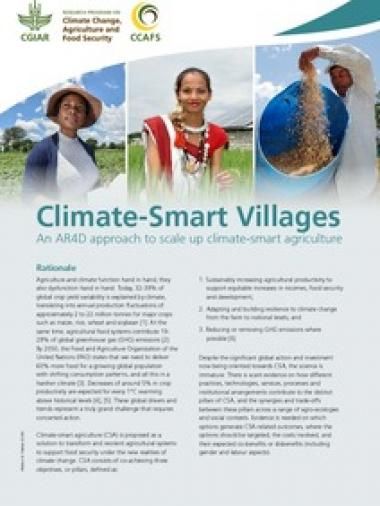Climate-Smart Villages: An AR4D approach to scale up climate-smart agriculture

Agriculture and climate function hand in hand; they
also dysfunction hand in hand. Today, 32-39% of
global crop yield variability is explained by climate,
translating into annual production fluctuations of
approximately 2 to 22 million tonnes for major crops
such as maize, rice, wheat and soybean [1]. At the
same time, agricultural food systems contribute 19-
29% of global greenhouse gas (GHG) emissions [2].
By 2050, the Food and Agriculture Organization of the
United Nations (FAO) states that we need to deliver
60% more food for a growing global population
with shifting consumption patterns, and all this in a
harsher climate [3]. Decreases of around 5% in crop
productivity are expected for every 1°C warming
above historical levels [4], [5]. These global drivers and
trends represent a truly grand challenge that requires
concerted action.
Climate-smart agriculture (CSA) is proposed as a
solution to transform and reorient agricultural systems
to support food security under the new realities of
climate change. CSA consists of co-achieving three
objectives, or pillars, defined as:
1. Sustainably increasing agricultural productivity to
support equitable increases in incomes, food security
and development;
2. Adapting and building resilience to climate change
from the farm to national levels; and
3. Reducing or removing GHG emissions where
possible.
Citation
CCAFS. 2016. Climate-Smart Villages: An AR4D approach to scale up climate-smart agriculture. Copenhagen, Denmark: CGIAR Research Program on Climate Change, Agriculture and Food Security (CCAFS).